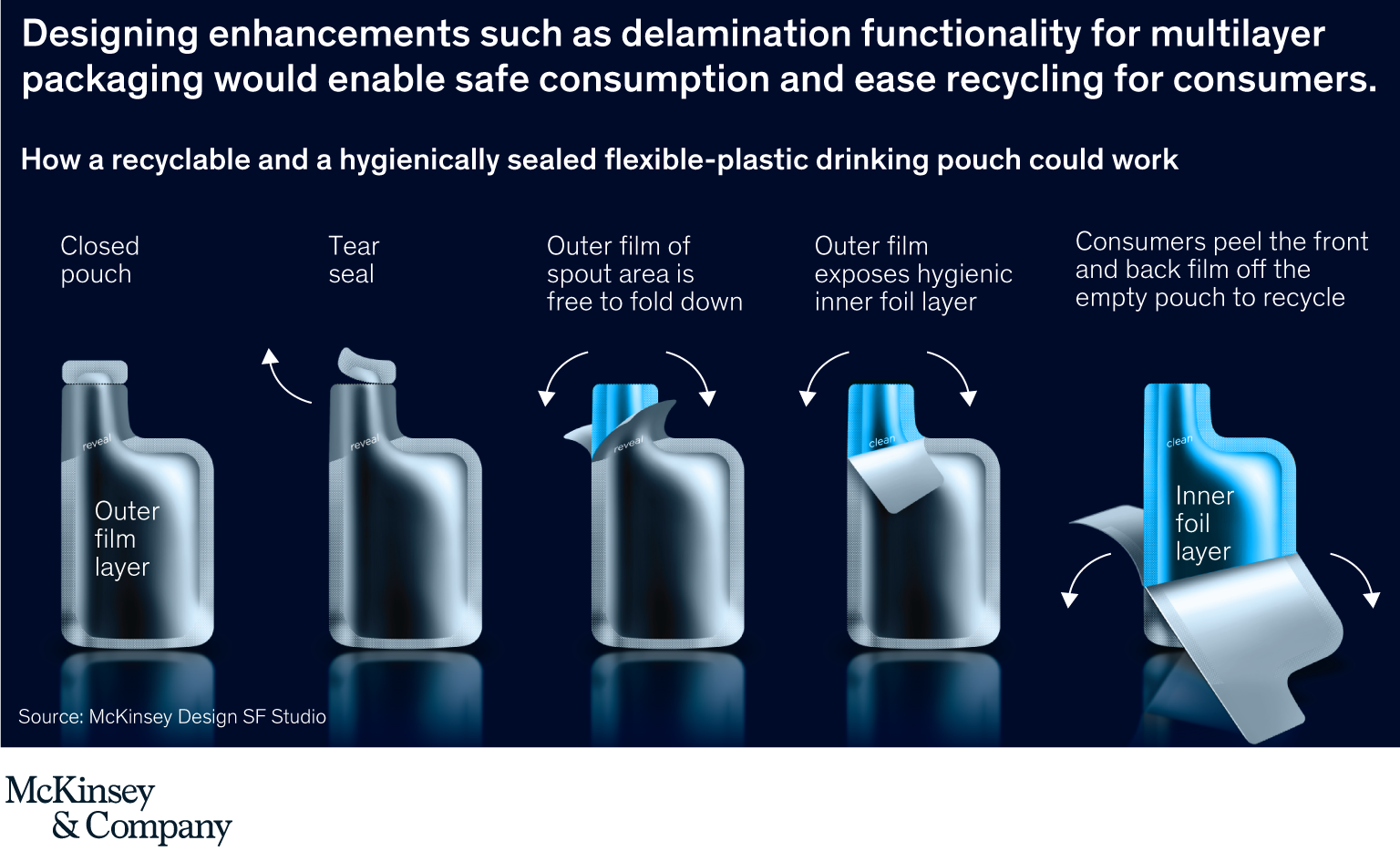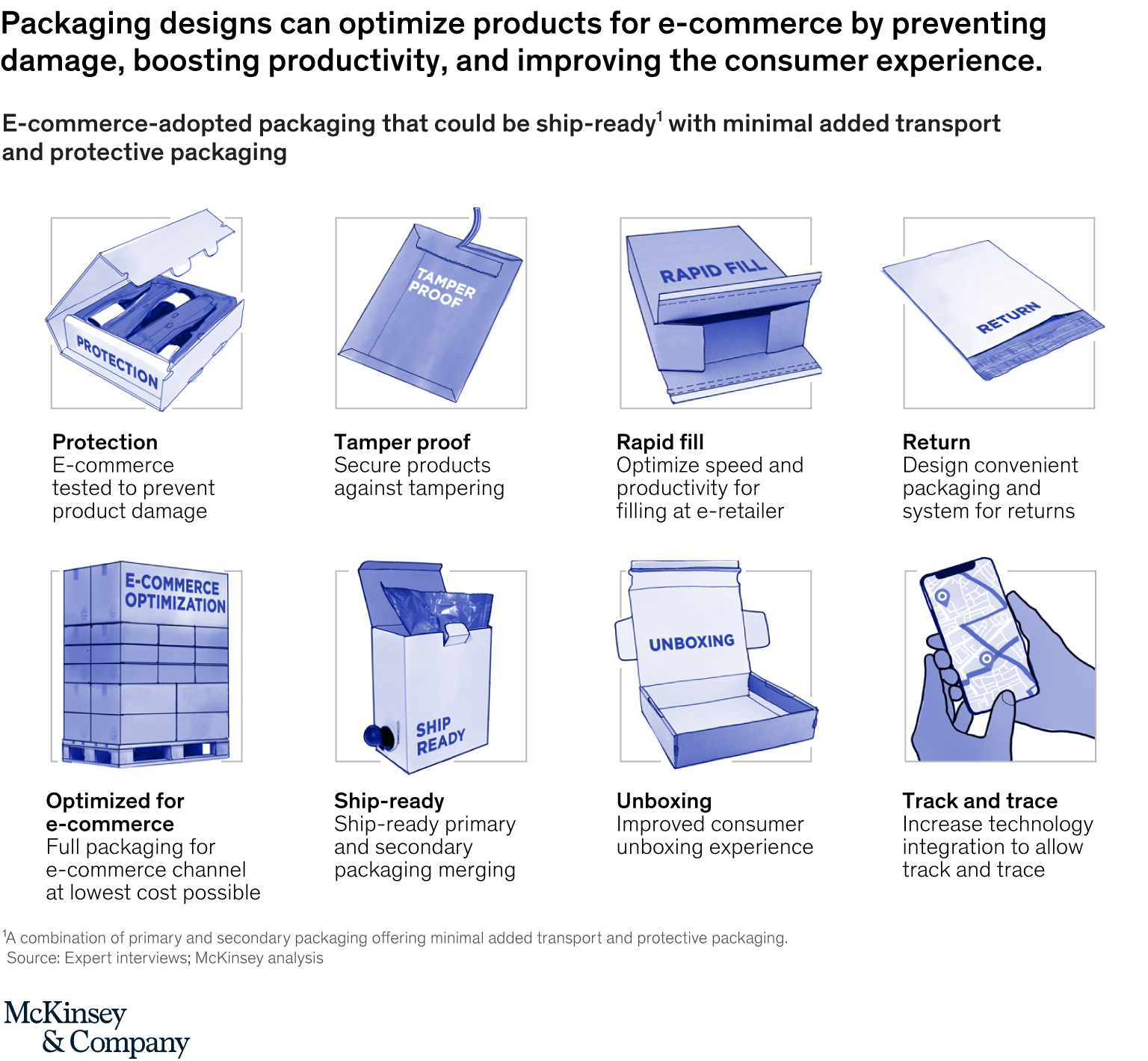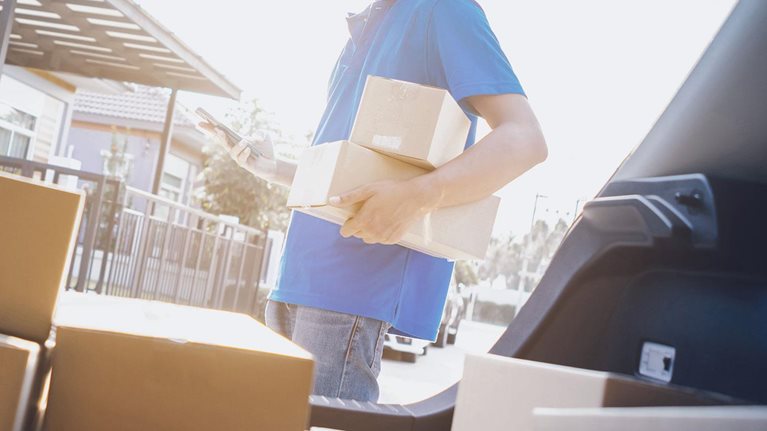The COVID-19 pandemic has reshaped the megatrends buffeting the $900 billion-a-year packaging industry. As the world manages through—and begins to emerge from—the great public-health and economic crisis, we expect these megatrend shifts to change packaging design in fundamental ways.
To prepare for these changes and the move to the next normal, packaging companies must rethink packaging design beyond “must-haves,” such as reasonable costs, convenience, and performance. Three major requirements must be addressed: first, a good sustainability narrative; second, design with hygiene in mind, given recent heightened consumer-safety concerns; and third, design for e-commerce, ship-ready design, and direct-to-consumer models.
With the right focus and innovation capabilities, these megatrend shifts and the resulting design challenges could help packaging converters1 grow by enabling customers to revise their packaging portfolios with improved design. To help companies navigate through the future and stay ahead of the competition, we propose five critical moves they can make to jump-start their packaging-design change journey.
Progressing megatrends: The next normal of packaging
The COVID-19 pandemic has changed key megatrends already reshaping the packaging industry before the crisis:
Sustainability reemphasized and redefined, with hygiene concerns addressed. Although sustainability has recently taken a back seat, it remains a key industry-shaping trend. Packaging-sustainability goals have not been abandoned by leading fast-moving consumer goods (FMCG) companies and retailers, which remain committed to achieving high recyclability across their packaging portfolio over the long term. However, given the strong emergence of the new hygiene megatrend—one likely to become a key element of the next normal in packaging—companies will have to rethink the materials and design requirements of sustainable packaging.
E-commerce everywhere. As a result of the stay-at-home orders in many countries, consumers have dramatically increased their digital engagement—in particular, for online grocery shopping. In the United States, online penetration in this segment has increased hugely. Some industry forecasts predict that penetration will reach 10 percent in 2020, compared with 2 to 3 percent before the crisis.2 This will have significant implications for packaging design. Understandably, most of today’s packaging has been optimized for traditional brick-and-mortar requirements, not online shipments.
Rapidly changing consumer preferences. The pandemic has brought about major channel and category shifts. In packaging’s next normal, we expect consumers to go on being price sensitive, to further accelerate their online shopping across all categories, and to focus even more on health and hygiene. These changing consumer preferences will make it necessary to rethink the product mix at FMCG and retail customers. Inevitably, there will be implications for packaging design.
Quickly changing cost pressures and more regional supply needs. Before the COVID-19 crisis, FMCG companies and retailers facing significant margin compression passed these pressures up the line to converters. This issue has already affected packaging design in multiple ways: for example, the substitution of different packaging materials, “light-weighting,” redesigned formats to increase filling efficiency and volume density, smaller pack sizes, and shelf-ready packaging. Given the crisis, we expect such cost pressures to continue, and this could amplify the existing need to use packaging design to reduce costs.
Speedier digitalization of the value chain. Another expected outcome of the pandemic is increased digitalization of the value chain through automation and the more widespread use of AI—not only for cost efficiency and productivity, but also to make supply more resilient and transparent through real-time tracking. The result could be a greater need to integrate technology—radio-frequency identification (RFID) tags and near-field communications (NFC)— into packaging. Innovative packaging designs will play an important enabling role. Packaging companies will need to reassess their strategies in light of these evolving megatrends.
The next normal’s impact on packaging design
Packaging design already plays a critical role in several dimensions:
- Supporting the consumer decision journey. The consumer’s perceptions of both the actual product and brand value depend highly on packaging—both its tactile feel and its look. It is therefore a key component in promoting products and helps to differentiate the introduction of new ones—particularly in today’s world, with rampant SKU proliferation and robust competition on shelves for the consumer’s attention. Primary packaging is also an information carrier that educates consumers about the product inside and ways to use it.
- Ensuring that products have a cost-efficient delivery system. Packaging plays a basic role in containing and protecting the product—for example, helping to preserve food, to extend its shelf life, and to minimize waste.
- Facilitating the consumer’s need for convenience. The consumer’s changing behavior and lifestyles have imposed new demands on packaged goods—for example, reducing the preparation time of food, packaging ready-to-eat fresh meals, and enabling “portionability,” portability, and smaller individual packs. Packaging design has played an important role in fulfilling these requirements by incorporating, for example, easy-to-open and resealable closures.
As we move to the next normal, packaging companies should further rethink packaging design, beyond these existing must-have factors. Any packaging launched during the pandemic or in the near future should take into account three other important requirements.
1. Design with a strong sustainability narrative
The broad spectrum of design opportunities to improve the sustainability narrative can be split into two major groups, which can be addressed in two stages:
- Step one: Low-hanging fruit. The design improvements here are no-regrets moves, carried out with only a minimal impact on operating costs and capital expenditures for customers and packaging converters alike. These moves include eliminating unnecessary packaging, increasing the use of recycled content in the packaging material when this would be easy to do (for instance, in less sensitive applications, such as nonfood items), and helping to communicate sustainability narratives more effectively (for instance, by showing consumers how to recycle packaging).
- Step two: Harder but doable. Actions here include packaging-design enhancements that can promote more extensive improvements than those in step one by taking into account the full circular economy and the direct environmental impact of producing packaging materials. This effort could involve packaging design to take advantage of recent innovations in materials and to use more mono-materials.3 It could also involve introducing packaging designs in new shapes and forms for easy recycling, with new substrates. If several layers of packaging are needed (for instance, for barrier requirements), delaminated packaging could be developed, so that the consumer can easily separate multisubstrate packaging (Exhibit 1). It will be necessary to ensure that these design choices do not have undesirable indirect consequences—such as increasing food waste, which could have a larger environmental impact than the packaging itself. The packaging-design moves mentioned here will typically require close collaboration (or even partnering) with customers and upstream suppliers for implementation in cost- and resource-efficient ways. Packaging converters must therefore proactively ensure that they have the right partners (for instance, raw-material suppliers) to give them access to innovative ideas for sustainability.

2. Design with hygiene in mind
The consumer’s awareness of hygiene and safety concerns has increased dramatically and will probably persist long after the pandemic subsides. A recent survey showed that more than two-thirds of US consumers worry about contracting COVID-19 from food packaging and that more than 40 percent use household disinfectants to clean the products they buy.4 In the short term, during the crisis, the consequences seem to be an increase in single-use packaging—for example, take-out food typically requires more packaging than food at quick-serve restaurants. Retailers are applying new safety and hygiene approaches to protect consumers—among other things, banning reusable bags, requiring face masks to be worn, and limiting the number of shoppers in stores.
Given heightened concerns around this issue, it will have a profound long-term impact on packaging designs and functionality. Several aspects must be addressed through new, improved packaging designs, particularly for foods and beverages, as well as other uses that require consumers to engage directly with packaging (for example, personal-care and healthcare products):
- Ensure that the virus is minimally viable on the packaging surface. The choice of substrate can affect the viability of the novel coronavirus, so there could be plenty of room for enhanced packaging designs. For example, a study published during the pandemic indicates that coronavirus-survival rates vary from 24 to 72 hours, depending on the packaging-material substrate.5
- Develop new delivery mechanisms for packaging. The consumer’s demand for convenience has sparked developments such as advanced closures and delivery systems that promote on-the-go consumption, as well as easy opening and closing of small single-use packs (examples include stand-up pouches for baby food and energy-gel pouches). Such systems typically require consumers to touch the surface of the packaging with their hands and to put it in their mouths to consume the contents. These exposed surfaces are prompting hygiene concerns that must be addressed. One way forward could be to further explore the internal delamination of different packaging materials; in other words, consumers could “peel off” a film to reveal a clean inner surface that can safely be put in contact with their mouths. This type of peel-off-film technology, which already exists for food-packaging applications, is often used in easy-open and easy-seal containers. It could also be applied in new ways with revised packaging designs.
- Ensure tamper-proof packaging and communicate it to consumers. Another issue is how to enhance consumer confidence by further improving tamper-proof packaging. The goals are to ensure protection against contamination, particularly for food and beverages, but not creating more packaging waste by adding materials and protective closures. Packaging design and printed information should be used to explain that products are safe and therefore to build trust with consumers.
3. Design for the e-commerce, ship-ready, and direct-to-consumer models
The number of products passing through the online channel is vastly expanding. Many packaging designs will therefore need a major update, especially if they were originally intended for traditional retail channels. Packaging designs can optimize products for e-commerce in many ways, such as preventing product damage, boosting productivity, and improving the consumer experience (Exhibit 2).

Although several of these e-commerce packaging trends are not new, they will intensify as more products go through the online channel. One emerging trend is the merger of primary and secondary packaging, a combination that is intended to use minimal added transport and protective packaging and can be shipped in its own container—a direct-to-consumer model. We also expect to see more packaging converters partnering directly with e-retailers to adapt packaging designs to the needs of the online channel. These designs will be approved by e-retailers (which is necessary to ensure that brand owners feel comfortable using the new packaging, such as leak-free, e-commerce–approved spray pumps and closures).
Five critical elements for starting on new designs
Clearly, the bar for good packaging design will rise in response to the next normal’s imperatives. Converters that do nothing risk falling behind their more proactive, fast-moving peers. Packaging converters should start their change journey with the following five moves to help customers align their packaging designs with the three emerging design requirements:
- Develop a clear view of how the megatrends will affect your end-use areas. Packaging companies must understand the full range of implications and possibilities. Establish clear strategic priorities and create road maps to determine proactively which customers will probably need immediate help to redesign and develop packaging.
- Embed a consumer-safety-first mentality when you introduce new packaging. In many end-use segments, concerns about food safety and hygiene will be a critical new packaging megatrend. Any new packaging to be launched during the pandemic or in the near future will have to address it. Consider how you can use existing or new materials and solutions to develop a winning approach.
- Assume that everything must be ready for e-commerce. Develop a deep understanding of what e-commerce means for your packaging designs. The requirements will range from more robust, cost-efficient packaging to designs that build consumer engagement and excitement around brands.
- Ensure that you have a strong sustainability narrative. Harness the latest innovations and smart-packaging designs to prevent waste and incorporate more recycled content. It’s important to compare the pros and cons of different packaging substrates along the full length of the value chain. Look at the environmental footprint of producing and converting the packaging material itself and at the whole life cycle, from raw materials to consumers to recycling and disposal. Consider trade-offs: for example, compare lightweight, multilayer pouches with higher fill rates for truck shipments serving online channels with packaging made from alternative materials that could be more recyclable. Assume that customers will increasingly ask for comprehensive environmental-footprint assessments of all packaging solutions.
- Do not take into account only one megatrend. Address the full range of packaging megatrends by taking a holistic approach.
The next normal will put packaging designs in the spotlight as the evolving megatrends reshape the business. Winning designs will have to address the needs of the online channel, sustainability, and hygiene, as well as the basics: cost, performance, and convenience. With the right focus, these design challenges could power significant growth. Conversely, converters that do nothing will fall behind their faster-moving peers.

